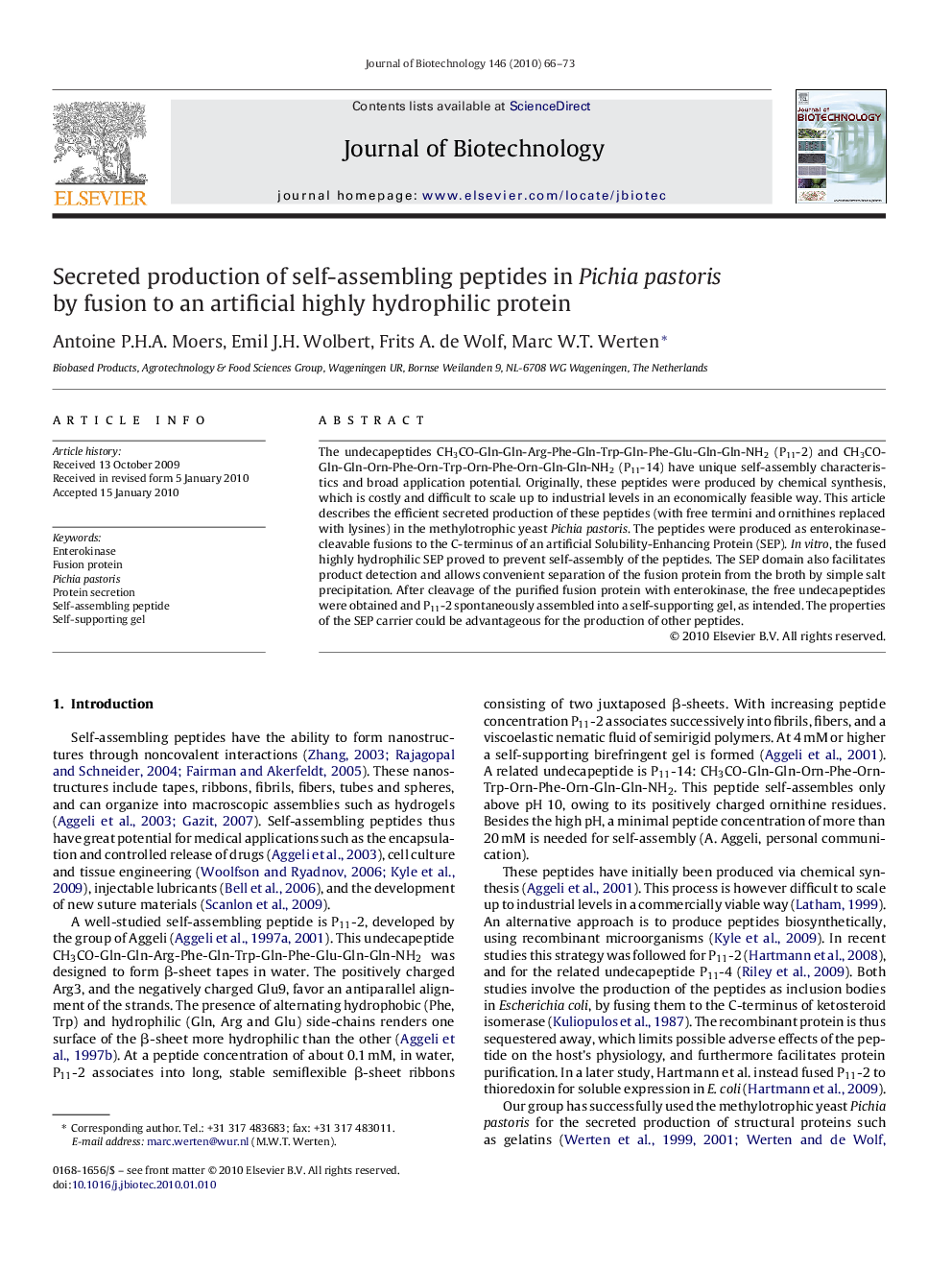| Article ID | Journal | Published Year | Pages | File Type |
|---|---|---|---|---|
| 24514 | Journal of Biotechnology | 2010 | 8 Pages |
The undecapeptides CH3CO-Gln-Gln-Arg-Phe-Gln-Trp-Gln-Phe-Glu-Gln-Gln-NH2 (P11-2) and CH3CO-Gln-Gln-Orn-Phe-Orn-Trp-Orn-Phe-Orn-Gln-Gln-NH2 (P11-14) have unique self-assembly characteristics and broad application potential. Originally, these peptides were produced by chemical synthesis, which is costly and difficult to scale up to industrial levels in an economically feasible way. This article describes the efficient secreted production of these peptides (with free termini and ornithines replaced with lysines) in the methylotrophic yeast Pichia pastoris. The peptides were produced as enterokinase-cleavable fusions to the C-terminus of an artificial Solubility-Enhancing Protein (SEP). In vitro, the fused highly hydrophilic SEP proved to prevent self-assembly of the peptides. The SEP domain also facilitates product detection and allows convenient separation of the fusion protein from the broth by simple salt precipitation. After cleavage of the purified fusion protein with enterokinase, the free undecapeptides were obtained and P11-2 spontaneously assembled into a self-supporting gel, as intended. The properties of the SEP carrier could be advantageous for the production of other peptides.
